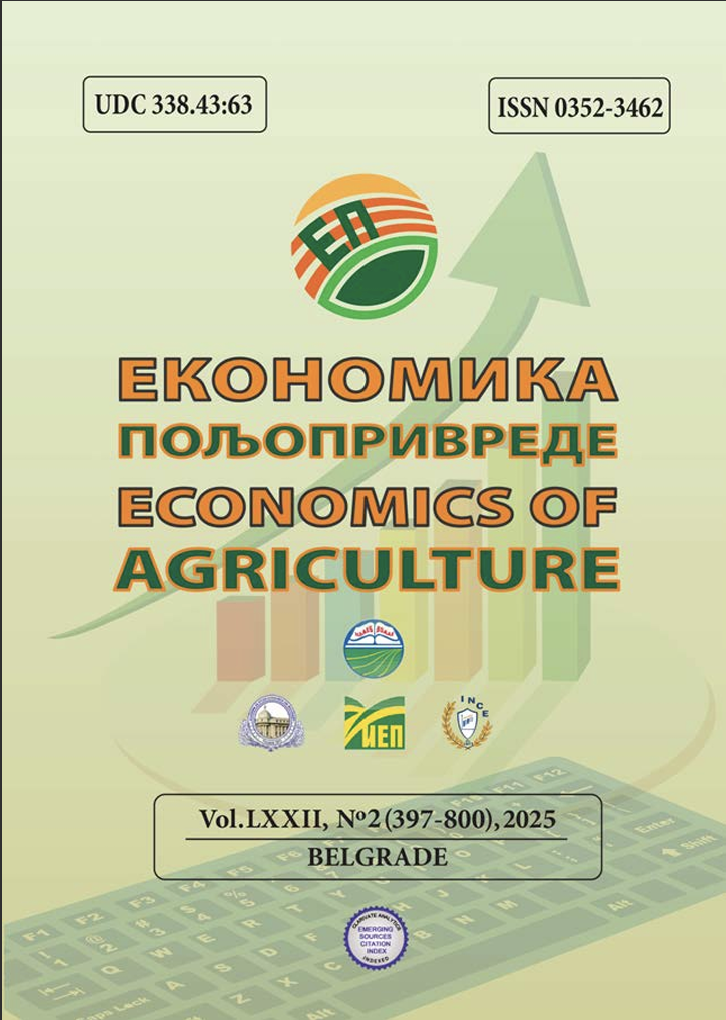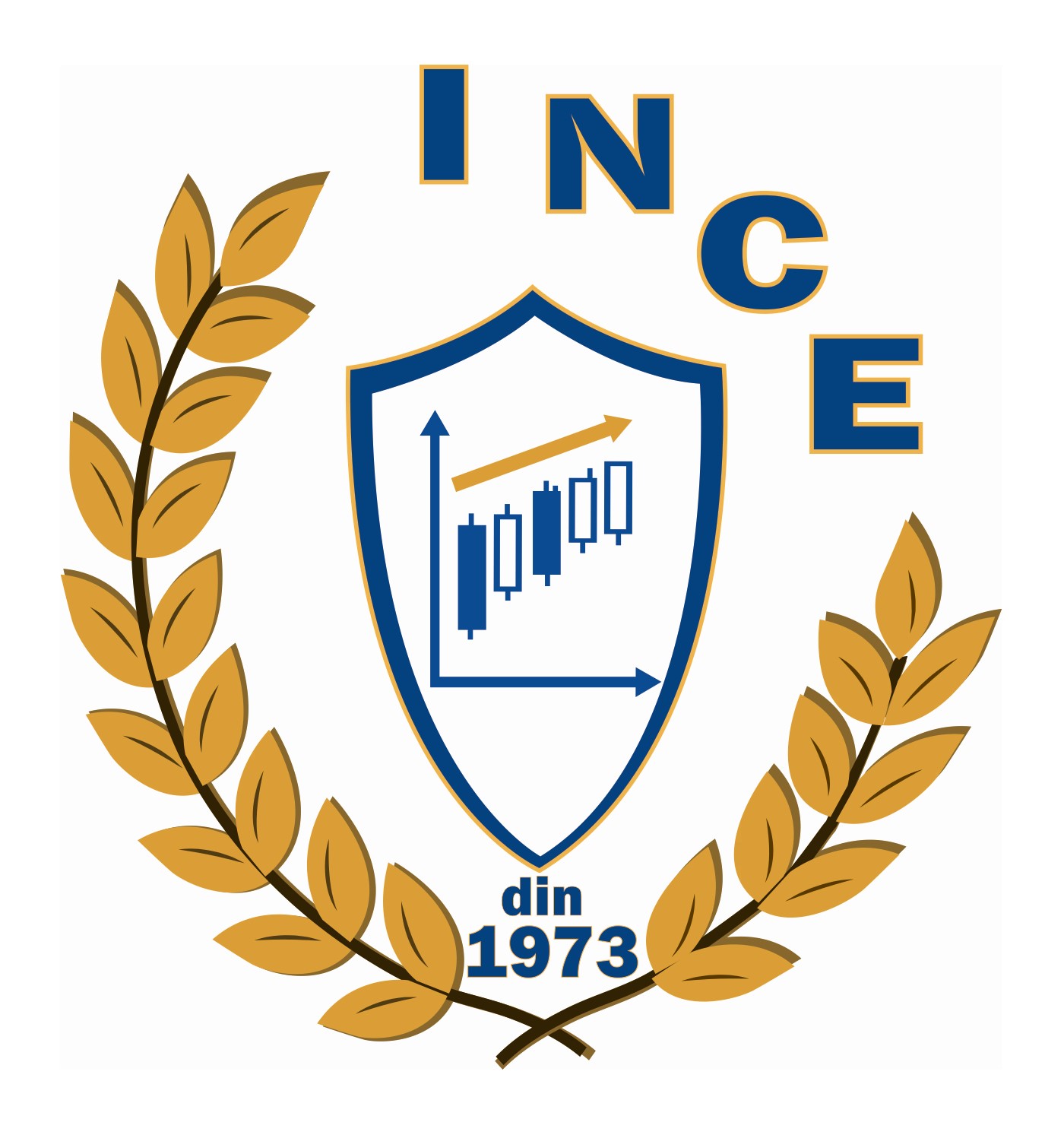DECENTRALIZED WASTEWATER TREATMENT: AN INNOVATIVE APPROACH FOR RURAL AREAS
DOI:
https://doi.org/10.59267/ekoPolj2502441JKeywords:
Decentralized wastewater treatment systems, phytoremediation, EU policy, public support, effciency of allocation, SME development, rural areas.Abstract
This study provides a comparative analysis of conventional and innovative wastewater treatment technologies for small settlements of up to 2,000 equivalent inhabitants (EH). Conventional systems such as the Sequencing Batch Reactor (SBR), Membrane Bioreactor (MBR), and Moving Bed Bioreactor (MBBR) were evaluated based on treatment efficiency, energy consumption, sludge production, operational complexity, and spatial requirements. Additionally, the potential of phytoremediation, specifically constructed wetlands, as a sustainable and low-cost alternative was explored. The study concludes that phytoremediation systems are a viable option for decentralized wastewater treatment in rural or ecologically sensitive areas due to their low operational costs and minimal energy needs. It recommends wider adoption of these systems, supported by further research and educational programs to optimize their design across different climates.
Downloads
References
Bernal, D., Restrepo, I., & Grueso-Casquete, S. (2021). Key criteria for considering decentralization in municipal wastewater management. Heliyon, 7(3), e06375. https://doi.org/10.1016/j.heliyon.2021.e06375
Capodaglio, A. G., Callegari, A., Cecconet, D., & Molognoni, D. (2017). Sustainability of decentralized wastewater treatment technologies. Water Practice and Technology, 12(2), 463–477.
Chirisa, I., Bandauko, E., Matamanda, A., & Mandisvika, G. (2017). Decentralized domestic wastewater systems in developing countries: The case study of Harare (Zimbabwe). Applied Water Science, 7(3). https://doi.org/10.1007/s13201-016-0377-4
Đaković, M., Kalaš, B., & Inđić, M. (2024). Analysis of the influence of microeconomic indicators on the level of company debt: an example of companies listed on the belgrade stock exchange. Akcionarstvo, 30(1), 197-216
Eggimann, S., Truffer, B., & Feldmann, U., Maurer, M. (2018). Screening European market potentials for small modular wastewater treatment systems – An inroad to sustainability transitions in urban water management? Land Use Policy, 78, 711-725. https://doi.org/10.1016/j.landusepol.2018.07.031
Eggimann, S., Truffer, B., & Maurer, M. (2016). The cost of hybrid waste water systems: A systematic framework for specifying minimum cost-connection rates. Water Research, 103, 472-484. https://doi.org/10.1016/j.watres.2016.07.062
Eurostat (2022). Urban-rural Europe - demographic developments in rural regions and areas. Retrieved from https://ec.europa.eu/eurostat/statistics-explained/index. php?title=Urban-rural_Europe_-_demographic_developments_in_rural_regions_and_areas (August 5, 2024)
Fluence (2024). Decentralized Versus Centralized Treatment. Retrieved from https://www.fluencecorp.com/decentralized-vs-centralized-treatment/ (August 15, 2024)
Garcia, D., Muñoz Meléndez, G., Arteaga, A., Ojeda-Revah, L., & Mladenov, N. (2022). Greening urban areas with decentralized wastewater treatment and reuse: A case study of Ecoparque in Tijuana, Mexico. Water, 14(4), 596. https://doi.org/10.3390/w14040596
Hoffmann, S. (2020). Small-scale wastewater treatment systems: Treatment efficiency, sustainability and implementation in rural and peri-urban areas. Doctoral thesis, Lund University. Retrieved from https://www.diva-portal.org/smash/get/diva2:1691375/FULLTEXT02.pdf (August 5, 2024)
Ignjatijević, S., Vapa Tankosić, J., Vapa, B., & Ivaniš, M. (2024). The determinantion of the demand for the international rural destination - the pls model. Oditor, 10(2), 284-312. https://doi.org/10.59864/Oditor92402SI
Luković, M., Kostić, M., Dudić, B., Spalević, V., & Pantović, D. (2024). Perceptions of mountain ecosystem services in Golija-Studenica Biosphere Reserve, Serbia: latent transformation from sustainable towards regenerative tourism. Journal on Protected Mountain Areas Research and Management, 16, (2), 4-15.
Macrotrends (2024). World Rural Population 1960-2024. Retrieved from https://www.macrotrends.net/countries/WLD/world/rural-population (August 5, 2024)
Massoud, M. A., Tarhini, A., & Nasr, J. A. (2009). Decentralized approaches to wastewater treatment and management: Applicability in developing countries. Journal of Environmental Management, 90(1), 652-659. https://doi.org/10.1016/j.jenvman.2008.07.001
Muzioreva, H., Gumbo, T., Kavishe, N., Moyo, T., & Musonda, I. (2022). Decentralized wastewater system practices in developing countries: A systematic review. Utilities Policy, 79, 101442. https://doi.org/10.1016/j.jup.2022.101442
Nansubuga, I., Banadda, N., Verstraete, W., & Rabaey, K. (2016). A review of sustainable sanitation systems in Africa. Reviews in Environmental Science and Bio/Technology, 15(3). https://doi.org/10.1007/s11157-016-9400-3
OECD (2022). Boosting Financial Literacy of Rural Populations in South East Europe. Retrieved from www.oecd.org//financial/education/boosting-financialliteracy-of-rural-populations-in-south-easteurope.htm (August 5, 2024)
Paraušić, V., Pantović, D., Mihailović, B., & Radosavljević, K. (2025). Digital literacy of farmers in the context of rural tourism services provision in Serbia. Hotel and Tourism Management. https://doi.org/10.5937/menhottur2500002P
Petković, Z., Ivanova, B., Đorđević, S., Ćorić, B., & Kaputo, J. (2024). Accounting aspect of income in financial business. Oditor, 10(3), 39-51. https://doi.org/10.59864/Oditor22403ZP
Singh, A., Srivastava, A., Saidulu, D., & Gupta, A. K. (2022). Advancements of sequencing batch reactor for industrial wastewater treatment: Major focus on modifications, critical operational parameters, and future perspectives. Journal of Environmental Management, 317, 115305. https://doi.org/10.1016/j.jenvman.2022.115305
The Global Economy (2024). Rural population, percent - Country rankings. Retrieved from https://www.theglobaleconomy.com/rankings/rural_population_percent/Europe/ (August 5, 2024)
Trading Economics. (2024). European Union - Rural Population. Retrieved from https://tradingeconomics.com/european-union/rural-population-percent-of-totalpopulation-wb-data.html (August 5, 2024)
United Nations Department of Economic and Social Affairs (UN DESA). (2022). United Nations Population Division’s World Urbanization Prospects: 2022 Revision. Retrieved from https://www.un.org/uk/desa/68-world-populationprojected-live-urban-areas-2050-says-un (August 5, 2024)
WHO/UNICEF (2021). Progress on household drinking water, sanitation and hygiene 2000-2020: Five years into the SDGs. Geneva: World Health Organization (WHO) and the United Nations Children’s Fund (UNICEF). Retrieved from www.unwater.org/sites/default/files/app/uploads/2021/07/jmp-2021-wash-householdsLAUNCH-VERSION.pdf (August 5, 2024)
World Health Organization – WHO (2024). Addressing sanitation challenges in the European Region. World Health Organization. Retrieved from https://www.who.int/europe/activities/addressing-sanitation-challenges-in-the-europeanregion (August 5, 2024)
Downloads
Published
How to Cite
Issue
Section
License
Copyright (c) 2025 Ekonomika poljoprivrede

This work is licensed under a Creative Commons Attribution-ShareAlike 4.0 International License.









